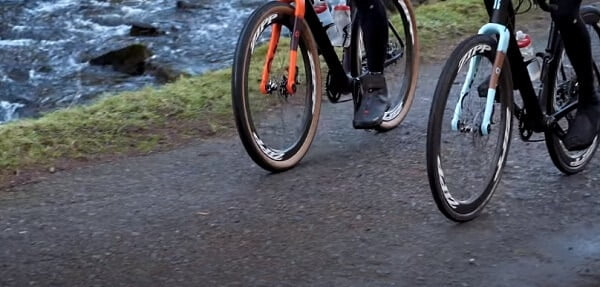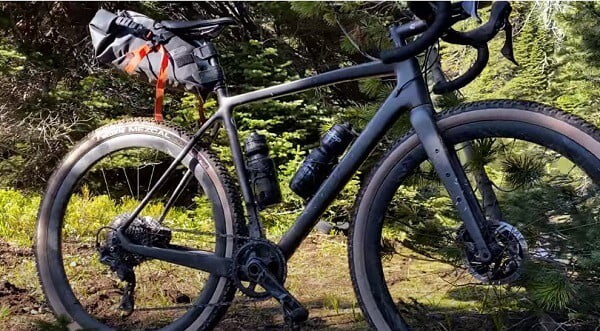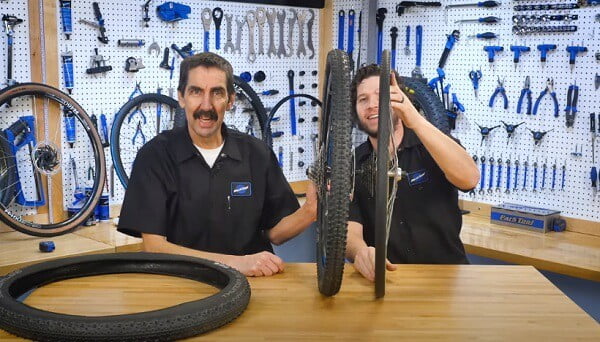None.
There are really no major differences between the two rims. The two numbers define the diameter of the rims: 29 inches or 700c of (intended) outer diameters, but they both have the same bead seat diameter, 622mm, making them the same size of rims. The only distinction between them is, supposedly, their intended use and the range of tire widths that can be fit onto them.

But the debate between them is a hot topic, and that is probably why you are here. Most people fall into this trap of naming conventions and misunderstand their meanings, and the guilty party is almost always the media and even tire manufacturers.
So let us try to make the situation a bit clearer for you to understand.
Origins of the Names: What is the C in 700c?
If you have done elementary math, you may assume that the C in 700c is some sort of unit of measurement; and you won’t be far off the mark. Though it is not a unit, it is a measurement guide designation that originated in France a long time ago (somewhat similar to S, M, and L sizes on outfits).
This guide indicates that after the addition of tires to the 700c rim, the total diameter of the tire outer surface will be 700mm.
Similarly, the 29 inch rim (or the 29er), will have a 29 diameter after the application of the tire. This is much easier to understand as this form of measurement is a lot more common in the present day.
But, no matter what you call them, both of these rims have the same diameter of 622mm.

Intended Use
The reason for these different names for the same size rims traditionally come from the users.
The cyclists of the road biking discipline prefer the French naming convention of the 700c, whereas the MTB enthusiasts keep it simple with the imperial measurement of 29 inches.
This is because the French did intend the rims to be used for road biking when they slapped the 700c label on them back in the day. Thus the term carried forward to road biking today.
These naming conventions do make the wheels seem different from each other. This creates a barrier between the biking disciplines and makes it appear as though they have contrasting intended uses. But at the end of the day, we are both cyclists and these are just 622mm rims.
There are other more important factors of the wheels that make them more suited to either discipline, like section depth and build materials.

Range of Widths
Road biking wheels usually have narrower profile tires than of MTBs. A higher width means more traction and comfort, which are must-have factors for mountain biking.
Since the 700c is intended for road biking, one might argue that the rims are narrower than that of the 29er.
If you are willing to bust out the vernier calipers from the old science bag, you will see that the 29er maybe a couple of millimeters wider than that of the 700c. But to the naked eye, there really is no difference between the rim widths of the 700c and the 29er.
Here are a couple of charts showing the tire width ranges of both disciplines:
| MTB Rim Widths (Possible 29er Width Ranges) | ||||
|---|---|---|---|---|
| 17mm (XC) | 21mm (XC) | 25mm (Trail) | 30mm (Enduro/DH/All-M) | 35mm (Enduro/DH/All-M) |
| Road Rim Widths (Possible 700c Width Ranges) | ||||
|---|---|---|---|---|
| 15mm | 17mm | 20mm | 23mm | 28mm |
Some Advice to Go Along With
Go for ISO/ETRTO rim diameter measurements if all of these numbers confuse you.
We have already used an example of the ISO previously: the 622mm rim diameter remember?
It is a standard and easily understandable metric. Most tires are imprinted with two of their preferable rim measurements. For example, a tire may have 25-622 imprinted on them, the 25 meaning the internal width, and the 622 means the diameter of the rim.
Here’s a video explaining the ETRTO standard:
ISO Tire Sizing Systems: https://www.sheldonbrown.com/tire-sizing.html#iso
Frequently Asked Questions
Q1. Can I put 700c wheels on a mountain bike?
Ans.: For MTBs that use 29ers, absolutely yes. There is really no difference between the wheels and are designed to take either.
A 700c on most standard mountain bikes under two conditions:
- You have to use disc brakes instead of rims.
- You have to use narrow tires.
Q2. What does the ‘700x40c’ on my tire mean?
Ans.: Numbers like these on the tire are from an old French measurement system. The breakdown is:
700: Theoretical diameter in millimeters of the tire.
x: Multiplied By, or just by.
40: Measurement of the tire width.
c: An old French measurement guide, in this case, for the width.
Q3. Can I use 29er wheels on a road bike?
Ans.: Yes. 29er rims have the same diameter as 700c ones.
What you do have to be careful about is the width of the tire. You may need to change the tire to a road friendly one as road bikes have low clearance. The tires may get stuck on the frame of the bike.
Another thing you have to keep an eye out for is the brakes. Rim brakes on MTBs have different positioning to that of Road bikes. But you don’t have to worry if you are using disc brakes.
➥ If you climb up and down along steep slopes, then, have a look at the best road bike wheels you can buy for climbing up and down
Final Words
We may have understood the subtle differences and conventions when it comes to the 700c and 29er, but confusions and misunderstandings like this will continue to persist with the way that it is going.
We are all cyclists here. All of us may not ride professionally but we do so with enthusiasm and passion. So, perhaps it is time for manufacturers to go easy on us consumers and present a more simple way to choose our tires and wheels. Without having to worry about misleading numbers and names, labels, and also, without having to go for trial and errors to get the tires that feel perfect for us and our bikes.

Excellent article,I learned something new and you de-mystified the confusing issues between these two mostly identical wheel specs.
Thanks for the information. Can I run a 700c stop a flat tube on a 29” specialized Rock Hopper rim?
To make things even more confusing, some mfrs call 700c 28in wheels (discovered on German mudguard specs).